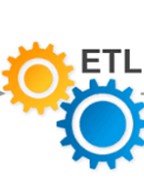What you will learn
- Understand the ETL process and its role in data integration and analytics
- Gain proficiency in designing and implementing ETL workflows using popular ETL tools
- Learn how to extract data from various sources, transform it to meet business requirements, and load it into target systems
- Explore techniques for data cleansing, validation, and enrichment during the transformation phase
- Learn how to handle errors, monitor ETL jobs, and troubleshoot issues effectively
- Gain insights into best practices for ETL design, performance optimization, and scalability
Beneficial for
- Data Engineers
- ETL Developers
- Data Analysts
- Database Administrators
- Business Intelligence Professionals
- IT Professionals involved in data integration and analytics
Course Pre-requisite
- Basic understanding of databases and SQL
- Familiarity with data formats and structures (e.g., CSV, JSON)
- Knowledge of programming languages (e.g., Python, Java) is beneficial but not mandatory
Course Outline
Overview of the ETL process and its significance
Key components of ETL: Extract, Transform, Load
Understanding ETL architecture models (e.g., batch processing, real-time)
Overview of popular ETL tools and platforms (e.g., Informatica, Talend, Apache NiFi)
Extracting data from various sources (e.g., databases, files, APIs)
Techniques for incremental data extraction and change data capture (CDC)
Data transformation techniques and best practices
Performing data cleansing, validation, and enrichment
Introduction to data integration patterns (e.g., aggregation, joining, deduplication)
Loading transformed data into target systems (e.g., data warehouses, data lakes)
Techniques for efficient data loading and bulk data loading
Implementing error handling and logging during the loading phase
Strategies for optimizing ETL workflows and job performance
Techniques for parallel processing, partitioning, and data compression
Monitoring and managing ETL jobs for performance optimization
Best practices for ETL design, development, and deployment
Implementing data quality checks and data governance in ETL processes
Compliance considerations and regulatory requirements in ETL operations
Analyzing real-world ETL use cases and scenarios
Understanding challenges and solutions in ETL implementation
Best practices for ETL in different industries and domains

